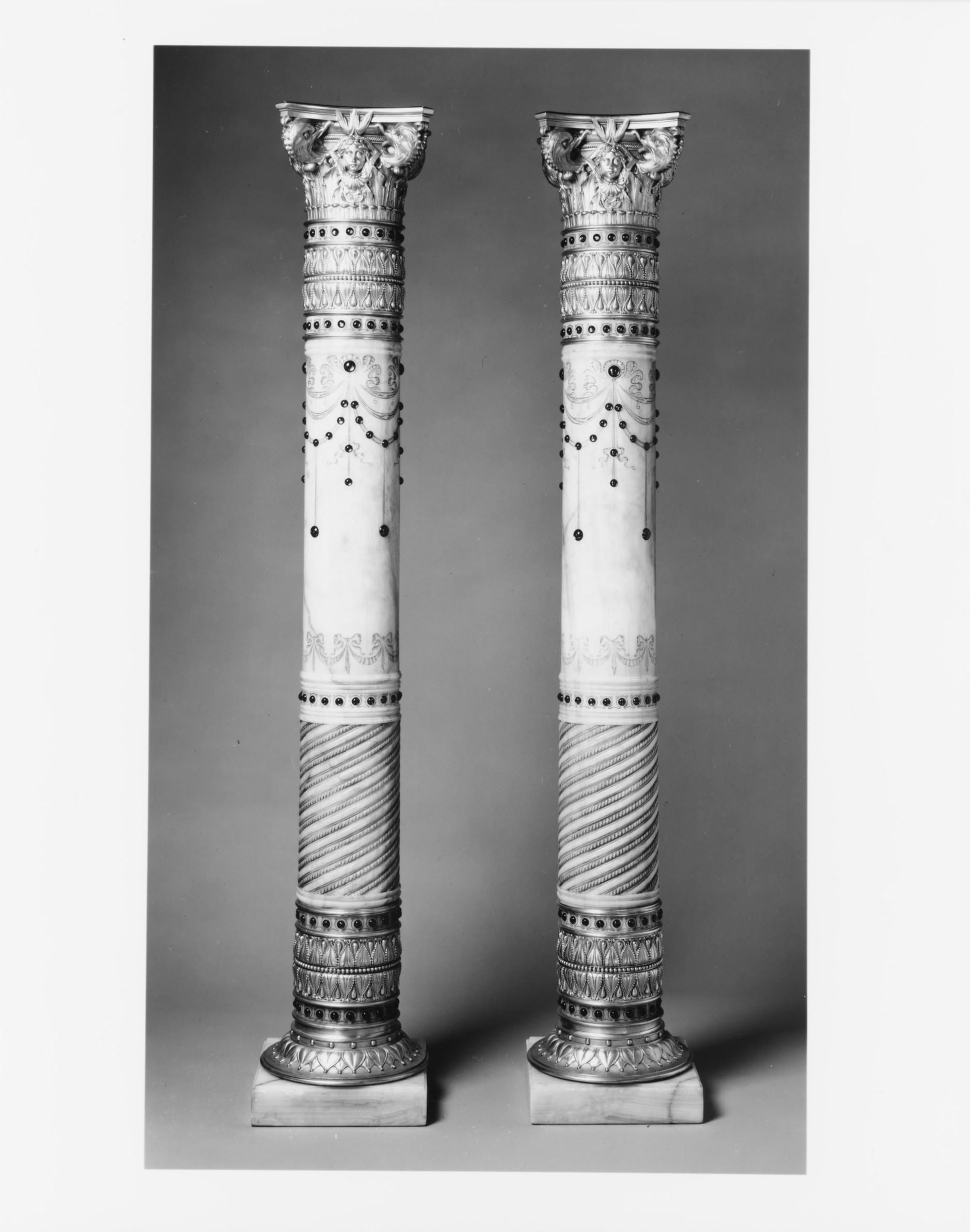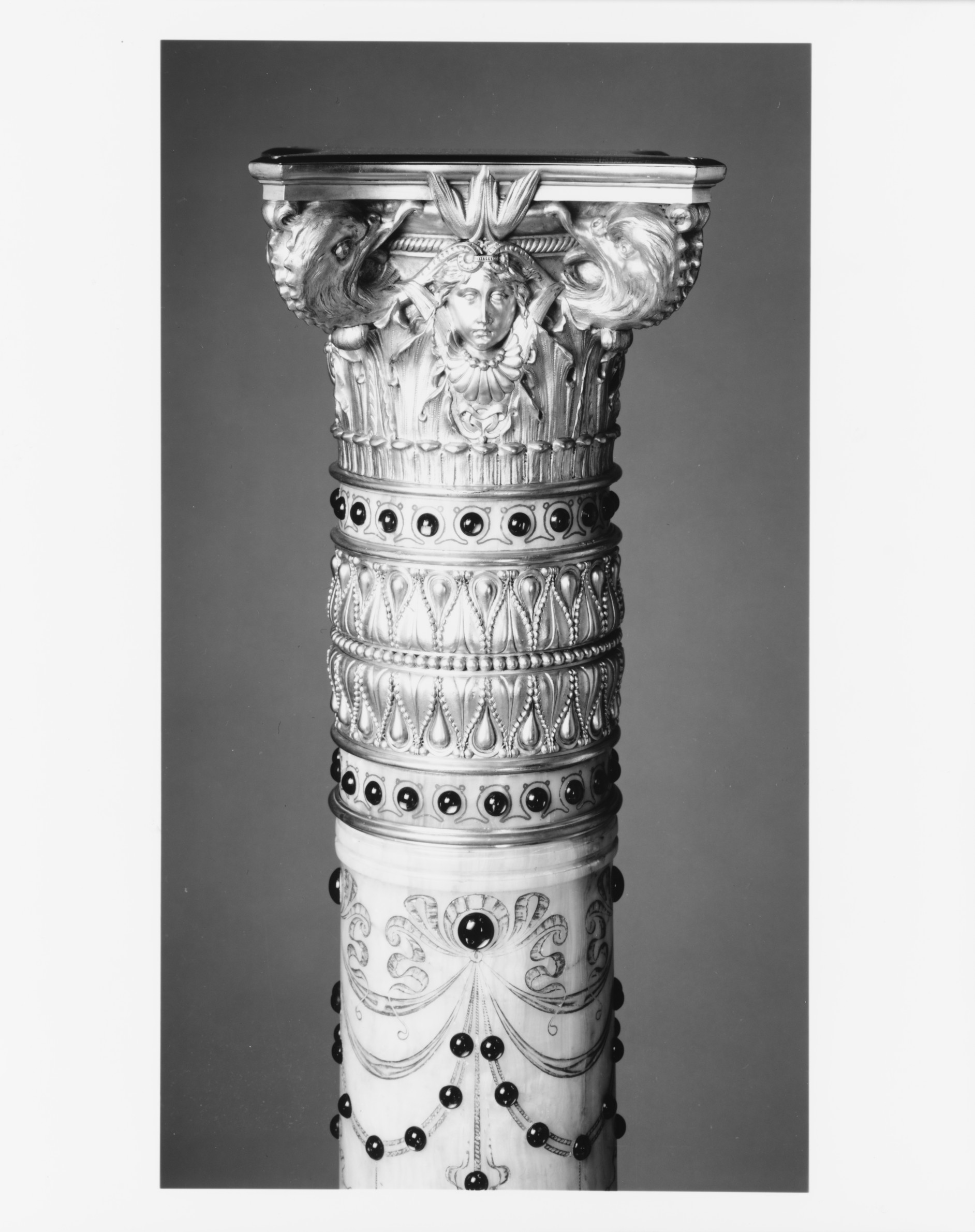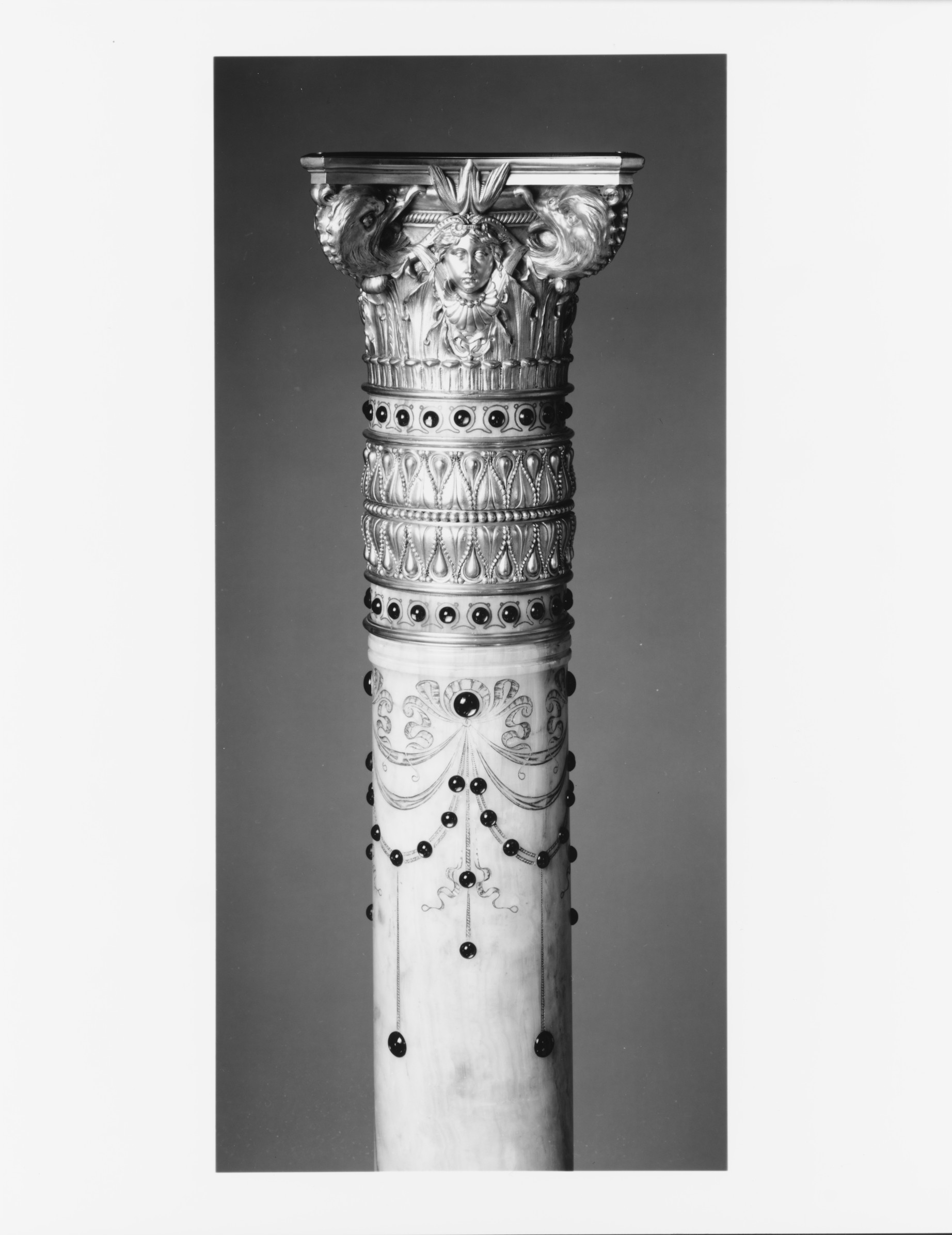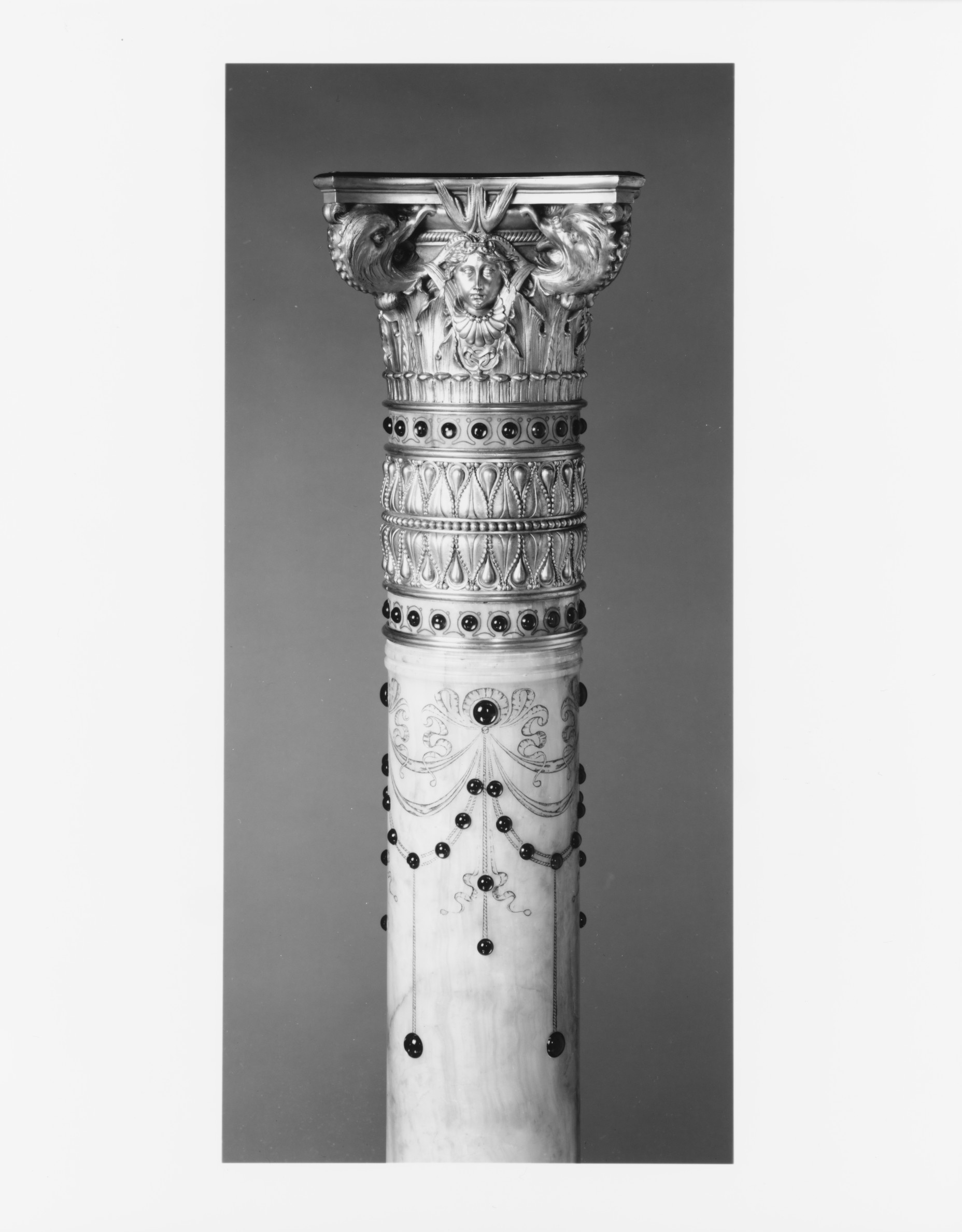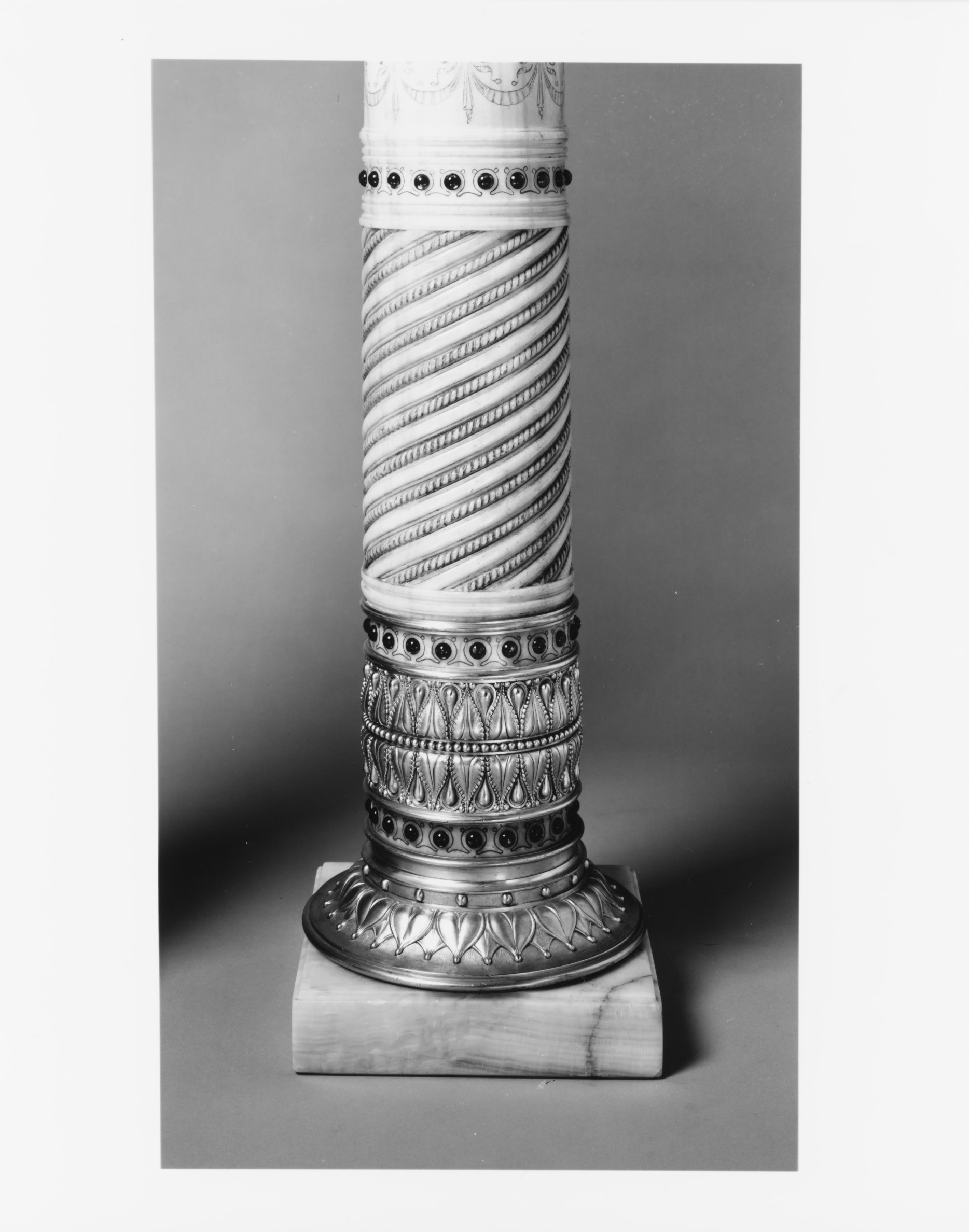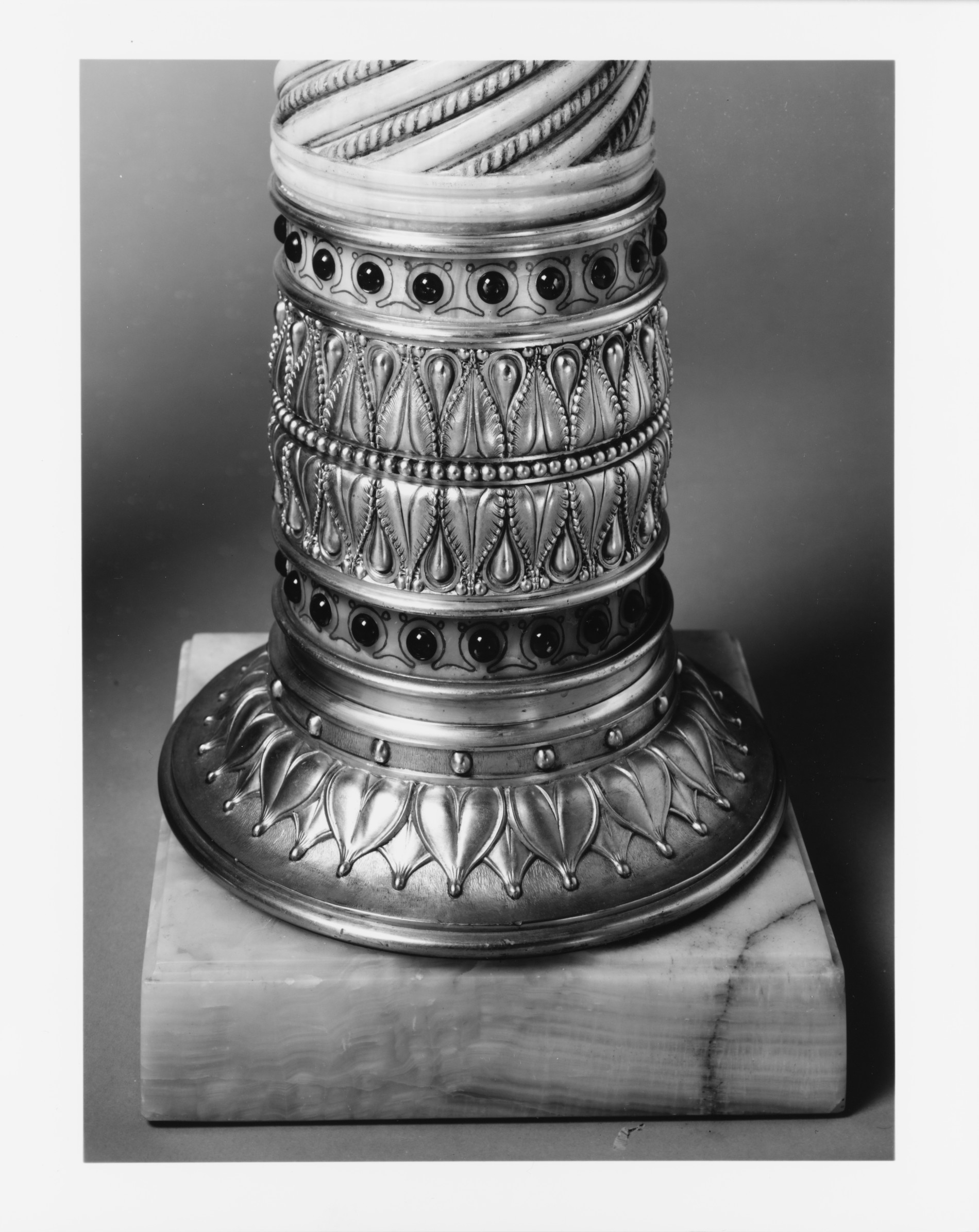Pedestal from the drawing room of the William H. Vanderbilt House
Herter Brothers American
Herter Brothers, the leading cabinetmaking, design, and decorating firm during the second half of the nineteenth century, created a pair (2002.298.1-.2) of opulent pedestals for their most prestigious commission, the grand Fifth Avenue residence of William H. Vanderbilt. Each pedstal is a column carved with ribbons and "jewel"-encrusted garlands. Ormolu capitals incorporate classical female masks and birds' heads; decorative mounts feature stylized foliate patterns. They were intended as an integral part of the ornate decoration of Vanderbilt's drawing room, described in 1883–84, shortly after its completion, as "gorgeous in the extreme: everything sparkles and flashes with gold and color—with mother-of-pearl, with marbles, with jewel-effects in glass—and almost every surface is covered, one might say weighted, with ornament." These onyx columns or pedestals, "hung with gold chains set with colored cut crystals," contributed to this impression. Their carved and gilded decorative motifs—tied bowknots and necklaces strung with jewelry—are repeated in decorations throughout the house. Lighting fixtures in the form of vases originally stood upon them, adding their own luster to the composition.
The drawing room was unquestionably the house's most sumptuous space. It was likened to the interior of a richly lined jewel box, its walls hung with crimson fabric, embroidered with gold thread and jewels of mother-of-pearl. Although the pedestals were originally part of an extraordinary interior scheme long since destroyed, they stand eloquently as independent works of art. In their design and use of luxurious materials, they epitomize the delicacy, opulence, and elegance of that room and of the Gilded Age.
Due to rights restrictions, this image cannot be enlarged, viewed at full screen, or downloaded.
This artwork is meant to be viewed from right to left. Scroll left to view more.


